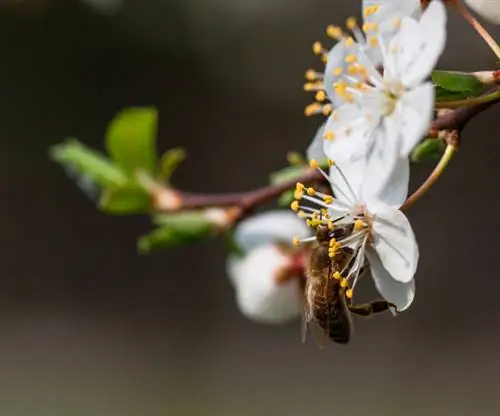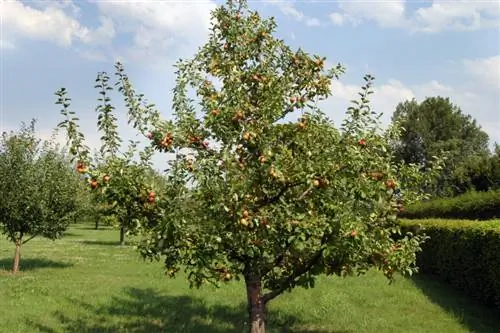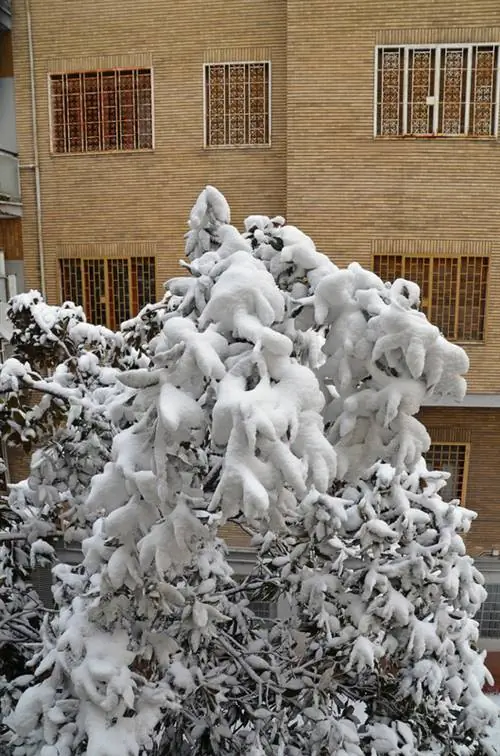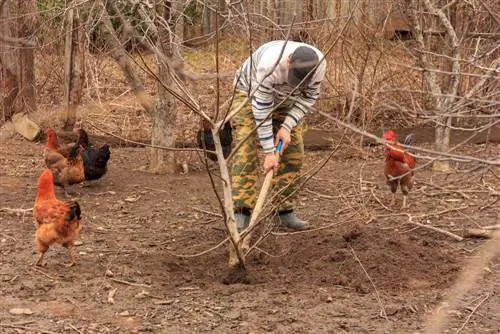- Author admin [email protected].
- Public 2023-12-16 16:46.
- Last modified 2025-06-01 06:02.
“You don’t transplant an old tree,” as the saying goes - and he’s right. Moving a tree that has been in its location for many years requires careful consideration. After all, this measure is associated with considerable risks, as many trees no longer grow afterwards. However, you have a better chance with young trees that have only been in their previous location for up to five years - here the success rate is significantly higher. However, with good preparation and thorough care, not much should go wrong when transplanting even an older specimen.

How to transplant a tree correctly?
To successfully transplant a tree, you should prepare its roots, prune, and transplant in fall or spring. Ensure good water supply and care at the new location.
Preparation
The main reason why many trees no longer grow and die after they have been moved is to be found in the roots. The longer a tree stands in its location, the further and, depending on the root type, deeper its roots spread. These must of course be cut off when transplanting, so that a large part of the above-ground parts of the plant can no longer be supplied. However, this effect can be minimized with the right preparation.
Root education
This includes training the roots into a compact ball, which is moved as a whole when moving. The advantage is that fewer roots are cut and the tree grows back more easily. And this is how it works:
- Dig a trench at least 50 centimeters deep around the tree trunk the previous year.
- The radius should be approximately the circumference of the crown (for deciduous trees) or at least 30 to 50 centimeters (for conifers).
- Cut any existing roots with a sharp spade.
- Fill the trench with mature compost or good, nutrient-rich potting soil.
- Water thoroughly.
Within a year, the tree develops numerous new fine roots, which remain compact on the ball and are therefore easier to move.
pruning
Preparation also includes pruning, which should be done immediately before transplanting. However, not every tree can tolerate this measure, so for many conifer species it is better to skip this step. Deciduous trees, on the other hand, are shortened by around a third. Such a planting cut makes sense because the roots are lost when they are moved and the remaining ones have trouble caring for the above-ground parts of the plant - instead of investing their energy in growing to the new location.
Implementation - This is how you proceed when transplanting
The actual transplanting is best done in autumn or early spring. And this is how it works:
- Dig up the ditch from last year.
- Cut any roots with a sharp spade.
- This also applies to roots growing downwards,
- To do this, stick the spade diagonally downwards.
- Strong, thick roots sometimes have to be exposed and cut with a saw (€45.00 on Amazon) or an ax.
- Now take a digging fork and loosen the root ball all around.
- Lift the tree out, if possible with the help of other people.
- Dig a sufficiently large planting hole.
- Loose the soil thoroughly at the bottom and sides of the hole.
- Fill in water and let it seep away.
- Mix the excavated material with compost and horn shavings.
- Replant the tree and tie it if necessary.
- Water thoroughly and thoroughly.
Tip
If the tree's leaves droop, perhaps even a few turn brown and fall off, in the first hours and days after transplanting, this is normal. However, he should recover quickly. Plenty of watering and mulching the tree disc helps.






